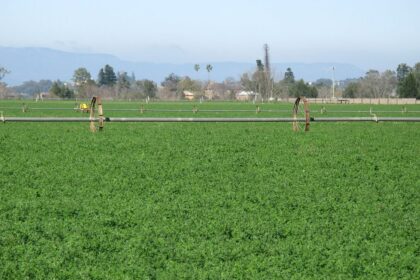Are you looking to raise pigs for profit but don’t know where to start? Here is how you can best utilize a small farm’s limited resources and space.
Nowadays, as a profitable business, cereal crops are out of the question, so raising animals such as chickens, goats, pigs, or rabbits – may be a viable option.
Even though the price of pork rises and falls, there is always consumer demand in Kenya.
Creating a pig farming business requires market research and careful planning to start a small business. The more work you put into creating a viable operation, the more profits you can have.
Still in doubt? Let me show you how to get started.
How to Raise Pigs for Profit on a Small Farm
Here is how to raise pigs for profit:
1. Conduct a Research
The first thing you need to do is research. It would help determine how many farmers have been in a successful pig production business in the past five years.
Put that together with your business and projected costs to get it up and running. Then, determine the amount you have to earn to profit before starting.
2. Visit a pig farm and ask for advice in terms of scale and operation.
Talking to successful farmers already in the industry will give you inside information. Arm yourself with questions about raising pigs, pig varieties, and market trends.
3. Calculate your costs.
It is better if you already have buildings, such as a cowshed, converted into a pig shed. It will reduce your initial installation costs and make you profit faster.
4. Estimate the costs of building pig pens.
Calculate the number of pigs you need and where they will be best placed. Make sure they have troughs and feeders. Look for food sources and calculate how much food will cost to raise the number.
5. Pigs varieties in Kenya
Choose a pig variety that is best suited to your needs. Some pig varieties take longer to grow and mature. But if you are into pig farming for profit, you must choose a type with a short growth time.
6. Pigs for Profit: Start with a small operation.
Just as self-employed individuals started by not quitting their daytime jobs until they had enough finance to support themselves, do a pilot project for the first, let’s say, six months to understand what pig farming entails.
If the first pilot project is successful, evaluate your profit margin and see if you want to reinvest more pigs’ money.
7. Raise pigs without locking them up.
Instead of keeping the pigs confined to a space for the whole day, let them search for food on the farm and nearby areas.
This helps reduce feeding costs and may open a market for people who do not want to buy pork fed with commercial feed.
8. Consider raising “fattening” pigs.
It would be best to buy 30 to 45 days old piglets for the pilot project. Feed them until they weigh around 90 Kilogrammes.
This should take about three to four months, and then sell them. Some diet formulas are added to the feed to fasten pig fattening.
This may be the most profitable way to breed them since you don’t have to keep sows and boars.
Plus, you don’t have to have them during the cold season when costs increase, thus reducing your profit margin.
It would help if you planned to have pigs ready for the market after the holidays to maximize demand and high prices.
This is because pork runs out of supply after Easter and Christmas due to earlier orders.
9. Do as much of the work as you can yourself.
Pig farming is a lot of work, but doing as much as possible by yourself will reduce your costs.
10. Hire someone with pig-rearing experience.
If you are not experienced in raising pigs, hire someone who is to take charge of the farm and help with the day-to-day operations.
This will help reduce the learning curve and costs associated with making mistakes.
11. Buying Pigs for Profit
Start by buying two sows and one boar (male pig). With proper management, these three pigs can generate up to 12 piglets in a year.
When buying pigs, consider their health, age, and weight. It is also essential to know the purpose of buying them.
Are you buying pork or bacon? Different pigs are suitable for various purposes, and you should buy them accordingly.
12. Find a market for your pigs.
Do not wait until the last minute to look for a buyer. Find out where the pork processors or abattoirs are in your area and start building relationships with them.
It would be best if you also had an idea of the going price for pork in your area to negotiate a fair price for your pigs.
13 Join a pig farmers’ association.
By joining a pig farmers’ association, you can get more tips on pigs for profit.
This will allow you to interact with other farmers and learn from their experiences.
14. Be prepared for the unexpected.
Pig farming is like any other business, and risks will always be involved. Be prepared for things such as disease outbreaks and market fluctuations.
15. Have a backup plan.
Lastly, have a backup plan for your pigs. This could be in the form of insurance or other financial options to help you in any unforeseen events.
Conclusion
Pig farming can be profitable, provided you do your homework well. Do your research, start small, and be prepared for the unexpected. With a bit of hard work and dedication, you can make a success of it.













